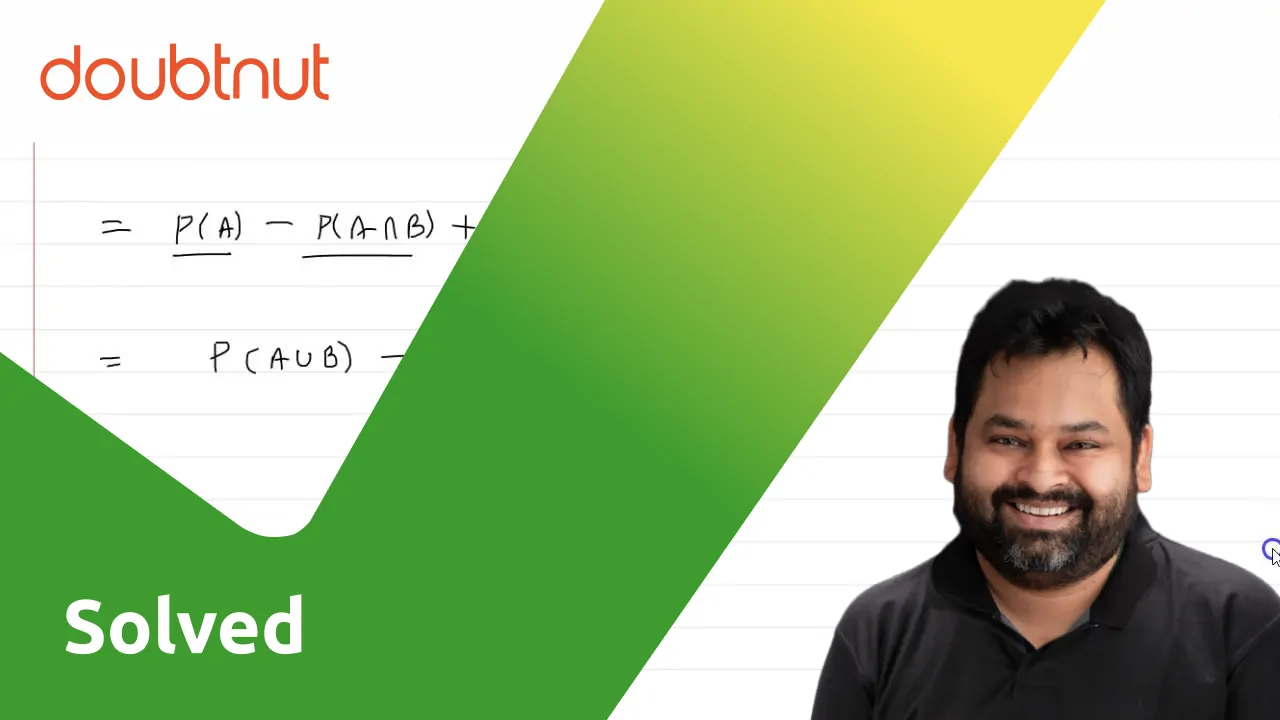If A & B are two events then P{(A∩¯¯¯B)∪(¯¯¯A∩B)}= (i)P(A∪B)−P(A∩B) (ii)P(A∪B)+P(A∩B) (iii)P(A)+P(B) (iv)P(A)+P(B)+P(A∩B)
Step by step video & image solution for If A & B are two events then P{(A nn bar B)uu(barA nn B)} = (i)P(Auu B)-P(AnnB) (ii)P(Auu B)+P(AnnB) (iii)P(A)+P(B) (iv)P(A)+P(B)+P(AnnB) by Maths experts to help you in doubts & scoring excellent marks in Class 12 exams.
Similar Questions
A and B are two events such that
P(A)=0.54,P(B)=0.69 and P(A∩B)=0.35
Find (i) P(A∪B) (ii) P(A'∩B')
(iii) P(A∩B') (iv)P(B∩A')05:56View SolutionLetA and B be two independent events such that P(A)=17 and P(B)=15. Find
i. P(A∩B) ii. P(A∪B) iii. P(A∩B')∪(B∩A')07:30View SolutionLet P be the set of all subsets of a given set X. Show that ∪:P×P→Pgiven by (A,B)→A∪Band ∩:P×P→Pgiven by (A,B)→A∩Bare binary operations on the set P.
06:09View SolutionIf A and B are arbitrary events, then a) P(A∩B)≥P(A)+P(B) (b) P(A∪B)≤P(A)+P(B) (c) P(A∩B)=P(A)+P(B) (d)None of these
01:54View SolutionA and B are two events such that P(A) = 0.54, P(B) = 0.69 and P(A∩B) = 0.35. Find:- P(A∩B')
01:56View SolutionThe two events A and B are such that P (A) = 0.54, P (B) = 0.69 and P(A nn B) Find 0.37: - P(AnnB')
01:10View SolutionA and B are two events such that P(A)=0.54,P(B)=0.69 and P(A∩B)=0.35.
(i) P(A∪B) (ii) P(A'∩B')
(iii) P(A∩B') (iv) P(B∩A')05:06View SolutionFor two events A and B P(A)=0.7,P(B)=0.5 and P(A∩B)=0.3. Find the values of following:
(i) P(A∪B) (ii) P(A/B)
(iii) P(¯¯¯A/¯¯¯B) (iv) P(¯¯¯B/¯¯¯A)04:29View Solution
